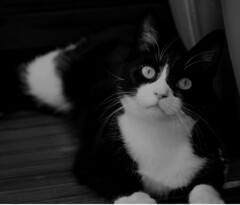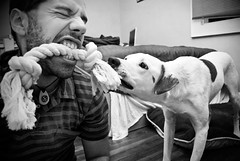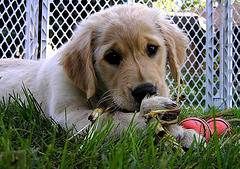Could the President of the United States be a vegetarian? According to Vanderbilt Professor of Philosophy Kelly Oliver, it’s not likely. In her recent New York Times Op-Ed, Oliver explained,
In the United States, we often see our political leaders hunting, particularly bird-hunting, which seems to demonstrate their manly fortitude and bloodlust — qualities intended to persuade us that they can keep us safe. Hunting has become a tool of sorts within the realm of political image making. With few exceptions, President Obama among them, most presidents and presidential hopefuls have been seen hunting. Meat eating, too, is an act used to portray strength. Obama is known to enjoy his burgers, a fact that has helped counter his image as a green-tea drinking elitist. Even Sarah Palin’s so-called new brand of feminism revolves around the image of a tough “mama grizzly,” as she calls herself, shooting and gutting moose to feed and protect her family.
Yet while hunters are often seen as tough providers, animal lovers are infantilized.
In popular culture, celebrities who take on animal causes are seen as a bit crazy — rich versions of the “crazy cat lady,” or dog-crazy Leona Helmsley. Not coincidentally, they are usually women. And, our relationships to the animals with whom (or rather which, to be grammatically correct) we live is given very little status in our society. Despite the proliferation of “cute” pet pictures and anecdotes on the Web, actual displays of affection toward one’s pet or companion animal, or grief expressed over their illness or death, is looked upon with ridicule.
What more, people who are dependent on their animals are seen as unhealthy. In fact, this is reflected in laws surrounding guide dogs, comfort dogs used to provide emotional support to children testifying in court, and other forms of animal service.
The regulations are very clear: these animals are not pets. They are “serving” an essential therapeutic purpose. The fact that these relationships are circumscribed by laws relegate animals to the role of tools or medication, an act that also pathologizes the people who rely on them. Animals, then, can enter our intimate family units only as pets, which is to say property, or as a result of trauma, disease or disability. This cultural attitude suggests that people who are dependent upon their animals for anything other than amusement or entertainment are abnormal or unhealthy. Loving animals as friends and family is seen as quirky at best and at worst, crazy.
To read more about Oliver’s specific reflections on animals and philosophy, click here
.





 Professor
Professor